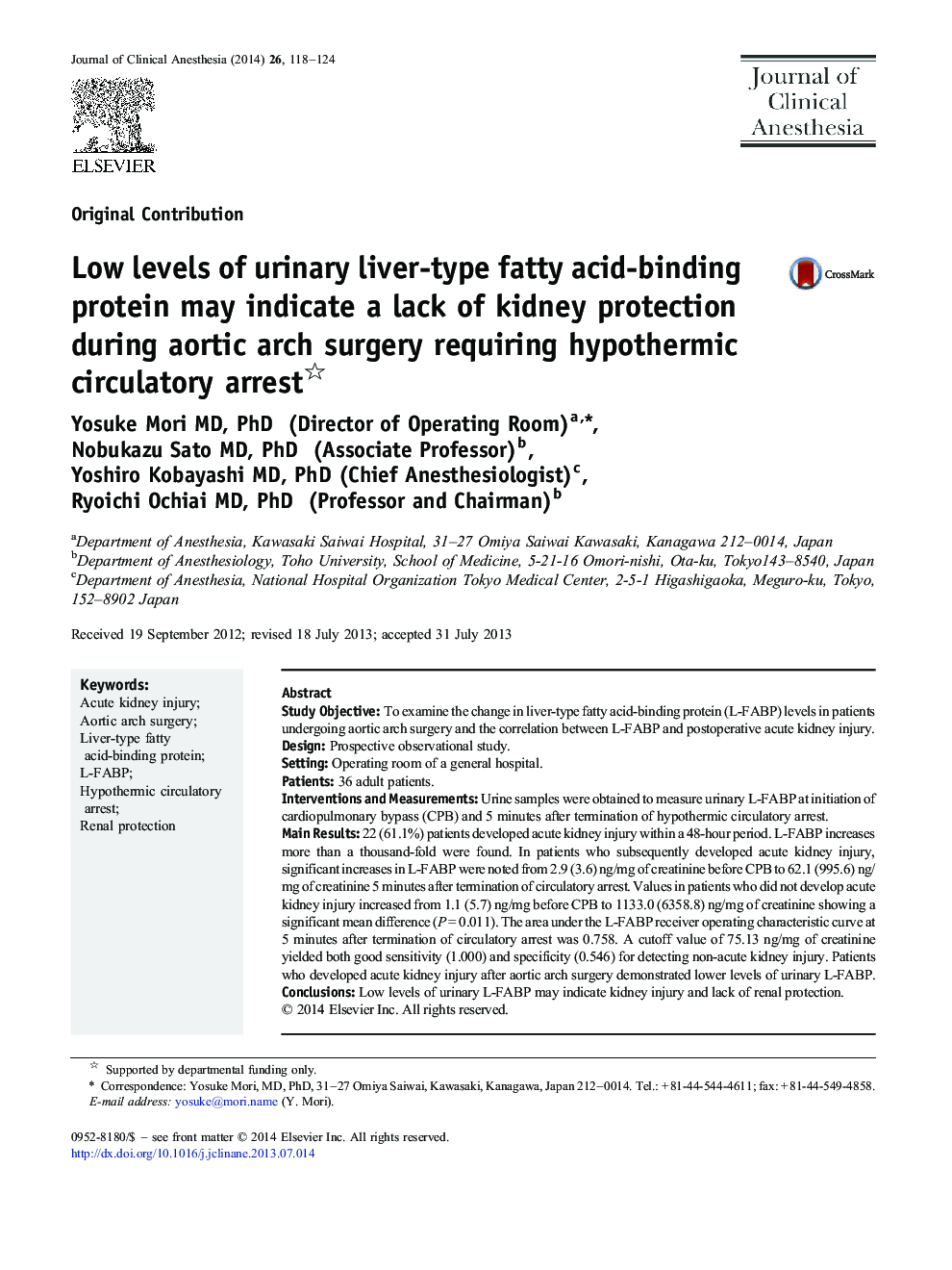| Article ID | Journal | Published Year | Pages | File Type |
|---|---|---|---|---|
| 2763017 | Journal of Clinical Anesthesia | 2014 | 7 Pages |
Study ObjectiveTo examine the change in liver-type fatty acid-binding protein (L-FABP) levels in patients undergoing aortic arch surgery and the correlation between L-FABP and postoperative acute kidney injury.DesignProspective observational study.SettingOperating room of a general hospital.Patients36 adult patients.Interventions and MeasurementsUrine samples were obtained to measure urinary L-FABP at initiation of cardiopulmonary bypass (CPB) and 5 minutes after termination of hypothermic circulatory arrest.Main Results22 (61.1%) patients developed acute kidney injury within a 48-hour period. L-FABP increases more than a thousand-fold were found. In patients who subsequently developed acute kidney injury, significant increases in L-FABP were noted from 2.9 (3.6) ng/mg of creatinine before CPB to 62.1 (995.6) ng/mg of creatinine 5 minutes after termination of circulatory arrest. Values in patients who did not develop acute kidney injury increased from 1.1 (5.7) ng/mg before CPB to 1133.0 (6358.8) ng/mg of creatinine showing a significant mean difference (P = 0.011). The area under the L-FABP receiver operating characteristic curve at 5 minutes after termination of circulatory arrest was 0.758. A cutoff value of 75.13 ng/mg of creatinine yielded both good sensitivity (1.000) and specificity (0.546) for detecting non-acute kidney injury. Patients who developed acute kidney injury after aortic arch surgery demonstrated lower levels of urinary L-FABP.ConclusionsLow levels of urinary L-FABP may indicate kidney injury and lack of renal protection.
